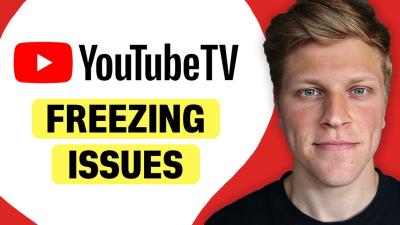The technology that powers AI image generators is both fascinating and complex, rooted in the fields of machine learning and artificial intelligence. To understand how these systems create realistic images, it's crucial to delve into the concepts of neural networks, deep learning, and generative models.
Neural Networks and Deep Learning: At the heart of AI image generators are neural networks, particularly deep learning models. These networks are designed to mimic the way the human brain processes information, consisting of layers of interconnected nodes or 'neurons'. Each layer extracts and processes different features of the input data, gradually building a detailed understanding of it.
- Convolutional Neural Networks (CNNs): These are specialized types of neural networks used extensively in image processing. CNNs are adept at recognizing patterns, shapes, and textures, making them ideal for image generation.
- Training the Network: AI models are trained using large datasets of images. During this process, the model learns to identify and recreate complex visual elements. The quality and diversity of the training data significantly impact the model's performance.
Generative Models: Two main types of generative models are commonly used in
AI image generation:
| Type | Description | Example |
|---|
| Generative Adversarial Networks (GANs) | GANs consist of two parts: a generator that creates images and a discriminator that evaluates them. The generator produces increasingly realistic images as it learns from the discriminator's feedback. | DeepArt, Artbreeder |
| Variational Autoencoders (VAEs) | VAEs are designed to compress data into a lower-dimensional representation and then reconstruct it. They are useful in generating new images that are similar to the training set. | Google DeepMind's DRAW |
Challenges and Improvements: While AI image generators are powerful, they face challenges like ensuring ethical use and avoiding biases in generated images. Continuous improvements are being made, such as incorporating better training datasets and refining algorithms, to enhance the quality and reliability of the generated images.In conclusion, the technology behind AI image generators is a sophisticated blend of neural networks, deep learning, and generative models. By understanding these underlying mechanisms, one can appreciate the intricacies involved in creating stunningly realistic images through AI.
The Benefits of Using AI for Image Generation

The integration of Artificial Intelligence (AI) in image generation has brought a plethora of benefits to various sectors. From enhancing creativity to streamlining workflows, AI image generators are transforming how images are created and used. Here, we explore the key advantages of using AI for image generation.
- Efficiency and Speed: AI systems can generate images much faster than traditional methods. This efficiency is crucial in fields where time is of the essence, such as news media or content creation for social media.
- Unlimited Creativity: AI offers the ability to produce an infinite variety of images, breaking the constraints of human imagination. Users can input detailed descriptions or abstract concepts to generate unique images that might not be possible through conventional means.
- Cost-Effectiveness: Employing AI for image generation can be more cost-effective than hiring professional photographers or graphic designers, especially for small businesses or startups with limited budgets.
- Customization: AI-generated images can be easily customized to fit specific requirements. This adaptability is invaluable for personalized marketing, targeted advertising, and bespoke content creation.
- Consistency: AI ensures a consistent style and quality across all generated images, which is vital for brand identity and visual coherence in marketing campaigns.
| Industry | Application |
|---|
| E-commerce | Creating product images and virtual showrooms |
| Entertainment | Developing concept art and promotional materials |
| Education | Generating visual aids and learning materials |
| Healthcare | Visualizing medical data and simulations |
Accessibility:
AI image generation tools are becoming increasingly accessible, with many platforms offering free or affordable options. This democratization allows a broader range of users, from hobbyists to small businesses, to leverage the power of AI for their image creation needs.In summary, the benefits of using AI for image generation are manifold, encompassing efficiency, creativity, cost-effectiveness, customization, and accessibility. These advantages make AI an indispensable tool in the arsenal of modern image creation and content production.
Comparing AI Image Generators with Traditional Methods
The advent of AI image generators has introduced a new paradigm in the field of image creation, presenting a significant shift from traditional methods. Understanding the differences between these approaches is key to appreciating the advancements AI brings to the table.
Quality and Realism: AI-generated images have reached a level of realism that often rivals, and sometimes surpasses, traditional photography and graphic design. The ability of AI to learn from vast datasets allows it to replicate intricate details that human artists might miss or take longer to produce.
- Consistency: AI maintains a consistent quality and style across images, which can be challenging in traditional methods, especially when multiple artists are involved.
- Innovation: AI opens up new possibilities in image creation, generating visuals that might not be feasible or would be extremely time-consuming through conventional techniques.
Cost-Effectiveness: AI image generators can significantly reduce costs related to human labor, materials, and time. While traditional methods involve expenses for artists, photographers, equipment, and editing tools, AI systems streamline these processes, often resulting in lower overall costs.
| Feature | AI Image Generators | Traditional Methods |
|---|
| Time Efficiency | Faster generation and iteration | Longer production times |
| Customization | Highly adaptable to specific needs | Can be limited by artist's skill or resources |
| Resource Management | Requires computational resources | Demands physical and human resources |
| Creative Boundaries | Limited by training data and algorithms | Limited by human imagination and skill |
Limitations and Challenges: Despite its advantages,
AI image generation is not without limitations. The quality of output heavily depends on the training data, which can sometimes result in biased or unrealistic images if the data is not diverse or comprehensive enough. Additionally, there are ethical considerations, such as the potential for misuse in creating deepfakes or infringing on copyright.In conclusion, while AI image generators offer efficiency, cost-effectiveness, and innovative possibilities, traditional methods still hold their value, especially in scenarios where human touch, judgment, and creativity are paramount. The choice between these methods depends on the specific needs, objectives, and constraints of the project at hand.
Exploring the Capabilities of Free AI Image Generators
Free AI image generators have democratized access to advanced image creation technology, offering a range of capabilities that were once exclusive to high-budget projects. These tools harness the power of AI to create diverse and complex images, providing users with a host of creative possibilities. Here, we explore what these free tools offer and their inherent limitations and advantages.
Overview of Free AI Image Generator Tools: Numerous platforms now offer AI image generation services at no cost, making this technology accessible to a broader audience. These tools typically utilize machine learning algorithms to convert text descriptions into visual representations, offering a user-friendly interface for both beginners and experienced users.
- Variety of Styles and Formats: Free AI generators can produce images in multiple styles, from photorealistic to abstract art, catering to a wide range of aesthetic preferences.
- Customization: Users can input detailed descriptions to guide the AI in creating images that closely match their vision.
- Instant Results: These tools generate images quickly, allowing for rapid prototyping and experimentation.
Limitations of Free AI Image Generators: While free AI tools are powerful, they have certain limitations.
| Limitation | Details |
|---|
| Quality Variability | The quality of output can vary, sometimes requiring multiple iterations for a satisfactory result. |
| Data Dependency | The tools are as good as the data they are trained on, which can limit diversity and creativity. |
| Resource Constraints | Being free, they might have usage limits or lower processing power compared to paid versions. |
Advantages of Using Free Tools: Despite these limitations, free AI image generators offer significant benefits.
- Accessibility: They provide an entry point for individuals and small businesses to access advanced image generation technology without financial investment.
- Educational Value: These tools are excellent for educational purposes, allowing students and enthusiasts to learn about AI and image creation.
- Encouraging Creativity: They stimulate creativity, enabling users to experiment and conceptualize ideas that might be challenging to visualize otherwise.
In conclusion, while free AI image generators may not match the capabilities of their paid counterparts, they offer an invaluable resource for experimentation, learning, and creative expression, making advanced AI technology accessible to all.
Step-by-Step Guide to Using HDStockImages AI Image Generator
HDStockImages offers a user-friendly AI image generator that enables users to create high-quality images with ease. Whether you are a professional designer, a marketer, or someone who just loves creating, this tool is designed to be intuitive and efficient. Here is a step-by-step guide to help you get started with this powerful tool.
- Access the AI Image Generator: Navigate to the HDStockImages website and locate the AI Image Generator page. This is usually accessible via the main menu or a direct link on the homepage.
- Create an Account or Log In: If you're a new user, you'll need to sign up. Existing users can simply log in. This step is essential as it allows you to save your work and access advanced features.
- Select Your Preferences: Once logged in, you will be presented with options to choose the type of image you want to generate. This includes style, format, and resolution options.
- Enter Your Description: In the provided text box, enter a detailed description of the image you want to generate. Be as specific as possible to ensure the best results.
- Adjust Settings: You can tweak various settings to fine-tune the image output. This includes color schemes, detail levels, and more, depending on the tool's capabilities.
- Generate the Image: Click the ‘Generate’ button and wait for the AI to process your request. This usually takes a few moments, depending on the complexity of your description and the current load on the server.
- Review and Edit: Once the image is generated, review it. If it's not exactly what you wanted, you can make edits or re-enter a modified description to refine the results.
- Save or Download: Satisfied with the image? You can then save it to your account or download it directly to your device in the desired format.
Tips for Better Results:
- Be Clear and Detailed: The more specific your description, the more accurate the AI's interpretation will be.
- Experiment: Don't hesitate to try different descriptions and settings to explore the tool’s full potential.
- Use the Editing Features: Take advantage of any available editing tools to fine-tune your generated images.
By following these steps and tips, you can effectively harness the power of HDStockImages AI Image Generator to create stunning images tailored to your needs.
Real-World Applications and Success Stories
The application of AI image generation has made significant impacts across various industries, proving its versatility and effectiveness. From revolutionizing marketing strategies to aiding in scientific research, the potential uses are vast. Highlighted below are some real-world applications and success stories that showcase the transformative power of AI image generation.
Advertising and Marketing: Businesses have leveraged AI image generators to create eye-catching and unique advertisements, social media content, and marketing materials. For example, a fashion brand successfully used AI-generated images to design an entire advertising campaign, resulting in increased engagement and sales.
Film and Entertainment: The entertainment industry has utilized AI for creating concept art, character designs, and even entire scenes. A notable instance is a film studio that used AI to generate realistic background scenes, significantly reducing the time and cost compared to traditional methods.
Healthcare and Research: AI image generators are being used in healthcare for visualizing complex medical data and creating anatomical models for educational purposes. A research team recently employed AI to visualize protein structures, aiding in the understanding of complex biological processes.
Educational Tools: Educational institutions are adopting AI to create visual aids and learning materials. An example is a university that used AI to generate historical reconstructions, providing students with a more immersive learning experience.
| Industry | Application | Outcome |
|---|
| Architecture | Designing building models | Enhanced design efficiency |
| Automotive | Visualizing new car models | Improved design and marketing |
| Fashion | Creating digital clothing prototypes | Streamlined design process |
| Environmental Science | Visualizing climate change impact | Increased awareness and understanding |
Success Stories: In addition to these applications, there are numerous success stories where AI image generation has brought about innovation and efficiency. For instance, a graphic design company reported a 50% reduction in project turnaround time after integrating AI into their workflow, while a real estate firm used AI-generated images for virtual property tours, leading to a significant increase in client engagement.These applications and success stories illustrate the transformative potential of AI image generation across diverse fields, driving innovation, efficiency, and creativity.
The Future of AI in Image Generation
The rapid advancements in Artificial Intelligence (AI) and its application in image generation promise a future that is both exciting and transformative. As AI technology continues to evolve, it is poised to redefine the boundaries of creativity, efficiency, and personalization in image generation. Let's explore the potential future trends and developments in this field.
Enhanced Realism and Accuracy: Future AI image generators are expected to produce images with even greater realism and accuracy. This will be achieved through more advanced algorithms capable of understanding and replicating intricate details and textures, making the generated images indistinguishable from real photographs.
Increased Personalization: AI systems will likely offer more personalized image generation, adapting to individual styles and preferences. This could lead to AI tools that can mimic specific artists’ styles or cater to unique brand identities in marketing materials.
Integration with Virtual and Augmented Reality: AI image generation will become more integrated with VR and AR technologies, providing immersive and interactive visual experiences. This integration could revolutionize fields like gaming, education, and virtual tourism.
Accessibility and User-Friendliness: As AI technology becomes more mainstream, we can expect user interfaces to become more intuitive, making powerful image generation tools accessible to a wider range of users, regardless of their technical expertise.
Automated Content Creation: AI will enable automated content creation, where images can be generated and modified in real-time based on dynamic inputs or data, significantly speeding up the content creation process in various industries.
| Trend | Potential Impact |
|---|
| Ethical and Responsible Use | Development of guidelines and standards for responsible AI usage, addressing concerns like privacy and bias. |
| Collaboration between AI and Human Creativity | AI as a tool to augment human creativity, leading to new forms of art and design that blend human and AI capabilities. |
| Environmentally Sustainable AI | Focus on making AI more energy-efficient, reducing the environmental impact of data centers and computing resources. |
Conclusion: The future of AI in image generation is not just about technological advancements, but also about how these tools will be integrated into our daily lives, creatively and ethically. As we step into this future, the possibilities for innovation and creativity are boundless, offering exciting prospects for artists, designers, marketers, and consumers alike.
FAQS
- How does AI create images from text descriptions?
AI uses a process called natural language understanding to interpret text descriptions and convert them into visual elements. It leverages large datasets of images and their descriptions to learn correlations and generate corresponding images.
- Are AI-generated images unique?
Yes, each image created by AI is unique. Even with similar text inputs, the AI can produce different images based on its interpretation and creative algorithms.
- Can AI image generators replicate any art style?
Most advanced AI image generators can replicate a wide range of art styles, from classical to modern and abstract. However, the accuracy of replication can vary based on the AI model and the complexity of the style.
- Is it possible to edit AI-generated images?
Yes, AI-generated images can be further edited using traditional image editing tools. Some AI platforms also offer built-in editing features.
- How are AI-generated images used in business?
Businesses use AI-generated images for various purposes, including marketing materials, website design, product visualizations, and social media content.
- Are there ethical concerns with AI image generation?
Yes, ethical concerns include the potential for copyright infringement, privacy issues, and the creation of misleading or harmful content. It's important for users to use AI responsibly and be aware of these concerns.
- Will AI image generation replace human artists?
While AI image generation is a powerful tool, it is not likely to replace human artists. Instead, it serves as a complement to human creativity, offering new tools and opportunities for artists and designers.
Conclusion
The exploration of AI in image generation has unveiled a world of possibilities and innovations that are transforming various industries and creative practices. As we have seen, AI image generators, like the one offered by HDStockImages, are not just tools for creating realistic images, but they are catalysts for efficiency, creativity, and personalization in visual content creation.While the technology continues to evolve, bringing more advanced capabilities and applications, it also presents a collaborative opportunity between human creativity and artificial intelligence. The future of AI in image generation is vibrant and promises further integration into everyday life, making complex and creative image generation more accessible to everyone.It's important to navigate this new era of digital imagery with an understanding of the technology's potential and its limitations. As AI continues to reshape the landscape of image creation, it also underscores the importance of ethical considerations and the irreplaceable value of human touch in art and design.In conclusion, AI image generation stands as a remarkable testament to human ingenuity and technological advancement. As we embrace this technology, it is essential to use it responsibly and creatively, ensuring that it serves to enhance and complement human creativity, rather than replace it. The journey into the future of AI-driven imagery is just beginning, and it is one that is full of promise and excitement for creators and consumers alike.
 The integration of Artificial Intelligence (AI) in image generation has brought a plethora of benefits to various sectors. From enhancing creativity to streamlining workflows, AI image generators are transforming how images are created and used. Here, we explore the key advantages of using AI for image generation.
The integration of Artificial Intelligence (AI) in image generation has brought a plethora of benefits to various sectors. From enhancing creativity to streamlining workflows, AI image generators are transforming how images are created and used. Here, we explore the key advantages of using AI for image generation.
 admin
admin








